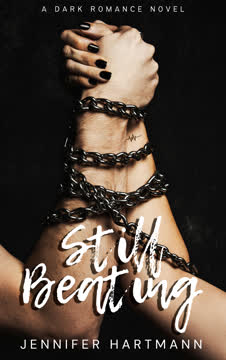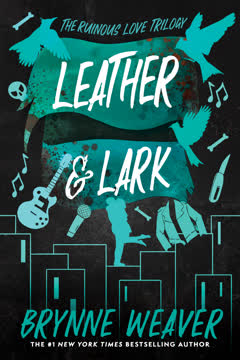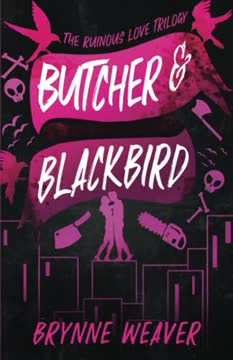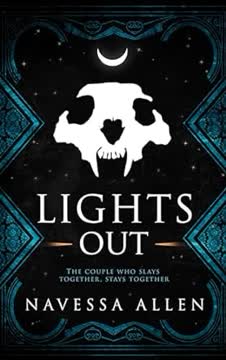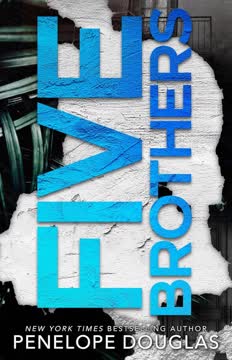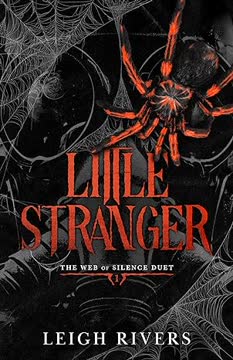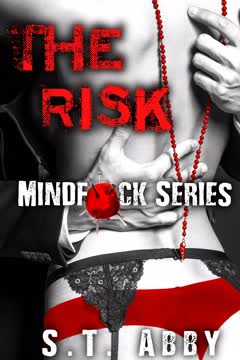Plot Summary
Birthday Barbs and Bad Blood
Cora Lawson endures her sister Mandy's thirtieth birthday party, forced into the company of Dean Asher—her sister's fiancé and lifelong nemesis. Their banter is sharp, laced with years of mutual antagonism and unspoken tension. Cora, the bookish, prickly younger sister, feels out of place among the revelers, her differences with Mandy and Dean highlighted by every exchange. When her wallet is stolen and she's stranded, she reluctantly calls Dean for a ride, setting the stage for a night that will change everything. The simmering animosity between Cora and Dean is palpable, but beneath it lies a complicated history and a connection neither wants to acknowledge. The night's end brings a sense of foreboding, as if fate is about to intervene in their tangled lives.
Abduction in the Night
On the drive home, Cora and Dean's bickering is interrupted by flashing lights and sudden violence. A stranger smashes the car window, dragging Cora from the vehicle and knocking Dean unconscious. The world tilts into chaos as Cora is abducted by a man she'd encountered earlier—a predator hiding in plain sight. She's thrown into a nightmare, her last memories of freedom tainted by fear and confusion. The abduction is swift, brutal, and senseless, leaving Cora and Dean at the mercy of a sadistic captor. The cold, dark unknown swallows them, and the life they knew is ripped away in an instant, replaced by terror and uncertainty.
Chained Together, Worlds Apart
Cora awakens in a grim basement, wrists chained behind her back, Dean shackled across the room. The reality of their captivity settles in: they are prisoners, playthings for a monster. Panic and despair threaten to overwhelm them, but survival instincts kick in. Their old animosity is both a comfort and a curse, fueling arguments that distract from the horror but also keeping them from true connection. As the hours pass, the lines between enemy and ally blur. Dean's concern for Cora's safety is genuine, and Cora's sharp tongue masks her terror. Together, they face the unthinkable, forced to rely on each other in ways neither could have imagined.
The Monster's Game
Their captor, Earl, delights in psychological torment, referring to Cora as his "kitten" and Dean as the "dog." He makes his intentions clear: Cora is his prize, Dean is expendable. The threat of sexual violence hangs over Cora, and Dean's helplessness is a fresh agony. Earl's twisted games escalate, and Cora's worst fears are realized. The trauma is immediate and shattering, but Dean's presence—his voice, his attempts to comfort—become a lifeline. The two are forced into a grim routine, their days marked by hunger, humiliation, and the constant threat of death. Yet, in the darkness, small mercies and moments of humanity flicker between them.
Survival and Small Mercies
Days blur together in the basement. Earl's cruelty is relentless, but he allows them food, water, and brief bathroom breaks—enough to keep them alive for his own purposes. Cora and Dean develop coping mechanisms: he sings to her at night, she clings to memories of home and family. Their banter softens, replaced by confessions and shared pain. They play games to pass the time, revealing secrets and vulnerabilities. The trauma bond is both a source of comfort and a complicating factor, forging a connection deeper than either expected. Small acts of kindness—a shared sandwich, a comforting word—become precious. Hope is a dangerous thing, but it's all they have.
The Unthinkable and After
Earl's sadism reaches new heights when he forces Dean to rape Cora at gunpoint. The act is devastating for both, a violation that leaves them shattered and estranged. Guilt, shame, and self-loathing consume them, and for a time, they retreat into silence and isolation. Yet, even in the aftermath, they find ways to reach for each other—through words, through touch, through the simple act of surviving together. The horror of what they've endured cannot be undone, but it binds them inextricably. Their relationship, once defined by antagonism, is now marked by a painful, undeniable intimacy.
Confessions in the Dark
As the days drag on, Cora and Dean share confessions—about past loves, betrayals, and the complicated history that led them here. Dean reveals he once had feelings for Cora, long before Mandy. Cora admits her own secrets, and the two confront the ways they've hurt each other over the years. The forced intimacy of their captivity strips away pretense, leaving only raw, unvarnished truth. They begin to see each other not as enemies, but as fellow survivors, as partners in pain. The possibility of something more—love, perhaps—flickers between them, even as they struggle to accept it.
The First Escape
An opportunity for escape arises when Dean manages to unlock Cora's cuffs with a piece of Earl's broken belt. Cora makes a break for freedom, only to be recaptured at the last moment. The attempt ends in violence and renewed despair, as Earl punishes them for their defiance. The taste of hope, so close and yet so quickly snatched away, is almost worse than the monotony of captivity. Yet, the attempt galvanizes them: they know escape is possible, and they vow to try again. The cost of failure is high, but the alternative—resignation—is unthinkable.
Hope, Failure, and Despair
Cora's failed escape leaves her battered and broken, both physically and emotionally. She spirals into despair, haunted by guilt and self-blame. Dean, too, is wracked with remorse, feeling responsible for their predicament. Yet, even in the depths of hopelessness, they find reasons to keep fighting: memories of family, the promise of rescue, the simple act of breathing. Their bond, forged in suffering, becomes a source of strength. They cling to each other, not as saviors, but as fellow survivors, determined to endure whatever comes next.
Breaking Points and Breaking Free
The final confrontation with Earl is brutal and bloody. Dean, pushed to the edge by Earl's threats and violence, kills their captor with his bare hands. The act is both a release and a new trauma, marking the end of their captivity but the beginning of a new set of wounds. They stumble into the light, battered and changed, greeted by the chaos of rescue and the bewildering return to normalcy. Freedom is not the end of their ordeal, but the start of a long, uncertain road to healing.
Aftermath: Wounds and Walls
Cora and Dean struggle to adjust to life after captivity. Their families, friends, and the world at large cannot understand the depth of their trauma or the bond they now share. Mandy, devastated by the truth of what happened, becomes a source of guilt and conflict. Cora and Dean's relationship, forged in darkness, is fraught with shame and secrecy. They are drawn to each other, unable to let go, but the world—and their own consciences—stand in the way. Healing is nonlinear, and setbacks are frequent. The scars of their ordeal run deep.
Forbidden Bonds
As Cora and Dean's connection deepens, they are forced to confront the reality of their feelings. Their love is a source of comfort and pain, a reminder of everything they've lost and everything they've survived. Mandy's heartbreak and anger cast a long shadow, and Cora is torn between loyalty to her sister and the undeniable pull toward Dean. Their attempts to move on—dating others, seeking therapy, avoiding each other—only reinforce the truth: they are bound together by something unbreakable. The cost of their love is high, and the path forward is anything but clear.
The Cost of Healing
Recognizing that their relationship is hindering their healing, Dean makes the painful decision to leave town, taking a job transfer and putting distance between them. Cora is devastated, feeling abandoned and lost. Both struggle to find meaning and purpose in the aftermath, seeking solace in therapy, family, and new routines. The separation is agonizing, but necessary. In the space between them, they begin to rebuild themselves, learning to live—and love—themselves again. The journey is long and fraught with setbacks, but hope endures.
Letting Go to Live
Months pass, and Cora and Dean slowly find their footing. Cora reconciles with Mandy, and both sisters confront the ways they've hurt each other. Dean finds stability in his new life, but neither can forget the other. Their occasional contact is bittersweet, a reminder of what was lost and what might still be possible. Healing is not linear, and both must learn to forgive themselves before they can truly move forward. The past cannot be erased, but it can be integrated into a new, more hopeful future.
Full Circle and New Beginnings
A chance encounter brings Cora and Dean back together, older, wiser, and finally ready to face the future. Their love, once forged in trauma, is now tempered by time and healing. They approach each other with caution and hope, determined to build something real and lasting. The obstacles remain—memories, guilt, the scars of the past—but they are no longer insurmountable. Together, they choose to begin again, not as victims, but as survivors, partners, and equals. The ocean, once a symbol of fear, becomes a promise of freedom and possibility.
The Ocean's Promise
Years later, Cora and Dean have built a life together, marked by love, forgiveness, and the hard-won peace that comes from surviving the unthinkable. Their family grows, and the wounds of the past become stories of resilience and hope. The ocean, once a source of terror, is now a place of joy and renewal—a testament to how far they've come. Their love endures, not in spite of their trauma, but because of it. Together, they have learned that healing is possible, that love can survive even the darkest night, and that the heart, still beating, is the greatest gift of all.
Characters
Cora Lawson
Cora is the heart of the story—a woman marked by trauma, resilience, and a sharp wit that masks deep vulnerability. Her relationship with her sister Mandy is fraught with rivalry and longing for acceptance, while her dynamic with Dean is a tangled web of antagonism, attraction, and ultimately, profound connection. Cora's journey is one of survival, not just from physical captivity but from the emotional chains of guilt, shame, and self-doubt. Her psychological arc is defined by her struggle to reconcile the horrors she's endured with her right to happiness and love. Through therapy, self-reflection, and the support of those who truly see her, Cora learns to forgive herself, embrace her scars, and claim a future she once thought impossible.
Dean Asher
Dean begins as the archetypal "bad boy"—tough, sarcastic, and seemingly indifferent—but captivity reveals his depth, vulnerability, and capacity for love. His history with Cora is complicated by years of teasing and hidden affection, and his relationship with Mandy is both comfort and constraint. Dean's greatest struggle is with guilt: for failing to protect Cora, for the violence he was forced to commit, and for the love that blooms in the darkest of places. His psychological journey is one of atonement and acceptance, learning that true strength lies in vulnerability and that healing sometimes means letting go. Dean's evolution from tormentor to savior, from lover to partner, is the emotional backbone of the novel.
Mandy Lawson
Mandy is the golden child—beautiful, popular, and seemingly perfect. Her relationship with Cora is a study in contrasts: love and jealousy, support and competition. Mandy's engagement to Dean is both a source of pride and a blind spot, and the revelation of Cora and Dean's bond is a devastating blow. Mandy's arc is one of loss and forgiveness, as she grapples with betrayal, grief, and the need to redefine her identity outside of her relationships. Her eventual reconciliation with Cora is hard-won, a testament to the enduring power of sisterhood and the possibility of healing even the deepest wounds.
Earl Hubbard
Earl is the story's antagonist—a sadistic captor who delights in psychological and physical torment. His methods are calculated, his cruelty boundless. Earl's manipulation of his victims, forcing them into impossible choices and perverse intimacy, is a study in power and dehumanization. He is both a symbol of random evil and a catalyst for the transformation of Cora and Dean. His death is not just an act of vengeance, but a necessary step in reclaiming agency and hope.
Tabitha Brighton
Tabitha is a former victim of Earl who emerges later in the story, offering Cora a glimpse of another path through trauma. Her survival, her loss, and her ability to build a life after horror provide Cora with both comfort and challenge. Tabitha's presence underscores the universality of pain and the possibility of healing, even when the scars are deep. Her friendship with Cora is a lifeline, a reminder that no one is truly alone in their suffering.
Cora and Dean's Parents
Both sets of parents play crucial roles as anchors in the storm, offering support, perspective, and sometimes tough love. Their reactions to the trauma, the forbidden relationship, and the long road to recovery reflect the complexities of family bonds. They are not perfect, but their presence is a reminder that healing is a communal effort, and that love—however flawed—can be a powerful force for good.
Lily
Lily is Cora's confidante, offering humor, honesty, and unwavering support. Her presence lightens the darkest moments, and her advice—sometimes questionable, always heartfelt—helps Cora navigate the treacherous waters of recovery and love. Lily's own journey, including her budding romance, mirrors Cora's in small ways, reinforcing the theme that everyone is fighting their own battles.
Blizzard, Jude, and Penny Lane
The dogs in the story are more than pets—they are symbols of hope, healing, and the possibility of redemption. Blizzard's death is a moment of profound grief, while the adoption of Jude and Penny Lane (rescued from Earl's property) represents the reclaiming of agency and the choice to nurture rather than destroy. Their presence is a balm, a reminder that love can be found in the most unexpected places.
Reid
Reid is Dean's friend and, eventually, Mandy's new partner. His role is to bridge the gap between past and future, offering both men a path to forgiveness and new beginnings. His relationship with Mandy is a sign that life goes on, that happiness can be found after heartbreak, and that the past need not define the future.
Earl's Other Victims
The stories of Earl's other victims, both living and dead, haunt the narrative. They are reminders of the randomness of fate, the universality of suffering, and the importance of bearing witness. Their presence deepens the sense of loss but also underscores the miracle of Cora and Dean's survival.
Plot Devices
Dual Trauma Bonding and Forced Proximity
The narrative's central device is the forced proximity of Cora and Dean in captivity, which accelerates the breakdown of old barriers and the formation of a trauma bond. Their shared suffering creates a space where secrets are revealed, roles are reversed, and new dynamics emerge. The trauma bond is both a source of comfort and a complicating factor, blurring the lines between love, need, and survival. The story interrogates whether love born in darkness can survive in the light, using the basement as both a literal and metaphorical crucible.
Nonlinear Healing and Cyclical Structure
The novel's structure mirrors the nonlinear nature of healing: progress is followed by setbacks, hope by despair, connection by isolation. Flashbacks, confessions, and time jumps are used to reveal character backstory and deepen emotional resonance. The cyclical return to key locations (the bar, the basement, the ocean) reinforces the idea that healing is a process, not a destination. The story's emotional arc is recursive, with each attempt at connection or escape echoing earlier failures and triumphs.
Symbolism: The Heart, the Ocean, and the Locket
The recurring motif of the heart—still beating, still alive—serves as a touchstone for survival and hope. The ocean, once a symbol of fear and the unknown, becomes a metaphor for healing, freedom, and the vastness of possibility. The locket, gifted by Dean to Cora, is a tangible reminder of their bond, their survival, and the promise of new beginnings. These symbols are woven throughout the narrative, grounding the characters' emotional journeys in concrete imagery.
Confession and Dialogue as Catharsis
Much of the novel's emotional power comes from dialogue—banter, confessions, arguments, and apologies. Words are used to hurt, to heal, to reveal, and to conceal. The act of confessing secrets, both in captivity and after, is a form of catharsis, allowing characters to process trauma and move toward forgiveness. The story's most pivotal moments are often verbal: a whispered promise, a shouted accusation, a simple "I love you."
Foreshadowing and Irony
The early antagonism between Cora and Dean foreshadows their eventual intimacy, while the mundane setting of a birthday party becomes the launching point for horror. The irony of being chained to one's enemy, only to find salvation in that bond, is central to the story's emotional impact. The narrative uses foreshadowing to build tension and deepen the sense of inevitability, while also subverting expectations about love, survival, and healing.
Analysis
Still Beating is a harrowing, deeply emotional exploration of trauma, survival, and the transformative power of love. At its core, the novel asks whether it is possible to build something beautiful from the wreckage of horror, and whether love born in darkness can survive in the light. Through the intertwined journeys of Cora and Dean, the story confronts the messy, nonlinear nature of healing—acknowledging that progress is often followed by setbacks, and that forgiveness (of self and others) is a hard-won victory. The narrative refuses easy answers, instead embracing the complexity of human emotion: guilt and desire, anger and tenderness, fear and hope. The use of captivity as both a literal and metaphorical device allows for a nuanced exploration of trauma bonding, consent, and the ways in which suffering can both divide and unite. Ultimately, Still Beating is a testament to resilience—the idea that even the most broken hearts can keep beating, and that love, when chosen freely and nurtured with care, can be a force for profound healing. The novel's message is both timely and timeless: survival is not just about enduring, but about finding the courage to live, love, and begin again.
Last updated:
Review Summary
Still Beating receives polarizing reviews, with many praising its emotional depth and powerful portrayal of trauma and healing. Readers appreciate the intense connection between Cora and Dean, born from shared captivity. However, some criticize the sister-dipping aspect and find the characters' actions unrealistic. The dark themes and graphic content are noted as potentially triggering. While some readers found the story beautiful and heart-wrenching, others felt it romanticized trauma and lacked proper character development. Overall, it's a divisive book that elicits strong reactions.
Similar Books
Download PDF
Download EPUB
.epub digital book format is ideal for reading ebooks on phones, tablets, and e-readers.
